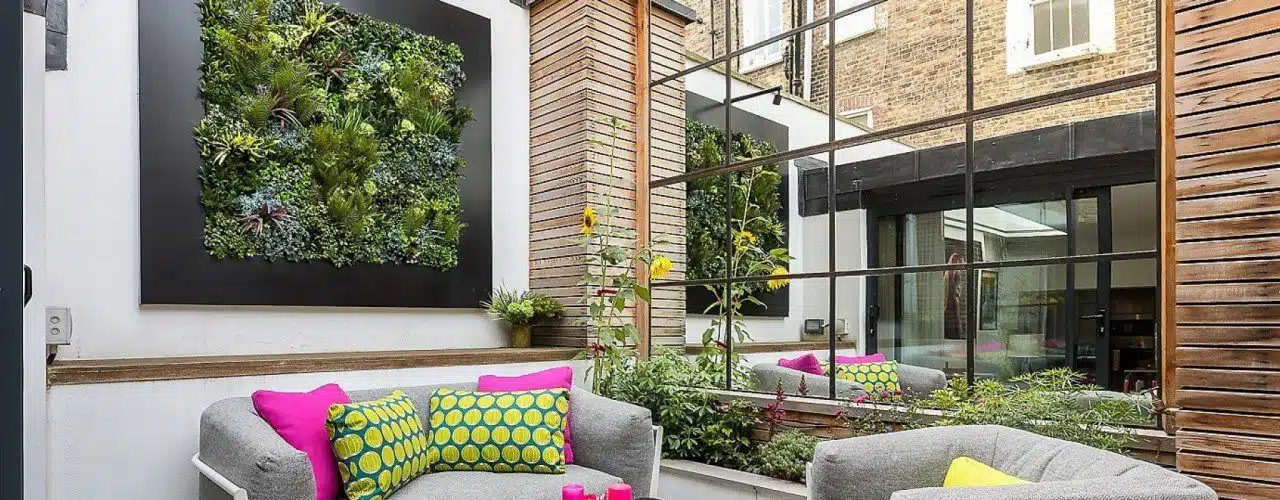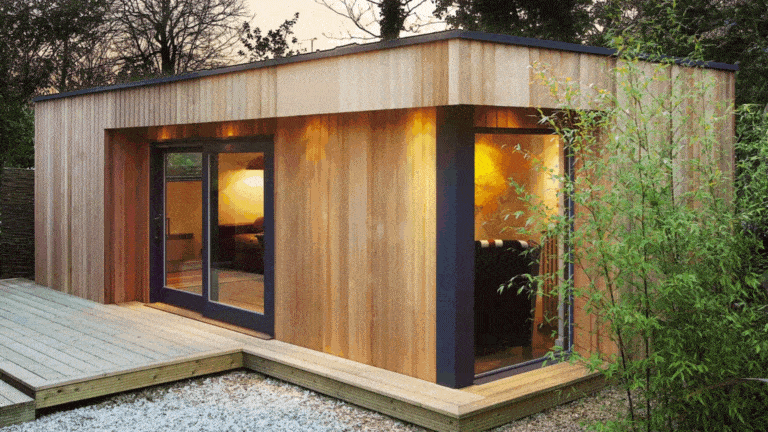Artificial Grass, Astroturf and Green Walls: How These Became So Popular
When I was a kid, you didn’t say artificial grass, you said Astroturf. It sounded quite exotic but that’s pretty much where the romance ended. It got its name from its first appearance in the Houston Astrodome, an indoor sports stadium where the original real grass surface had given up the ghost when glare-reducing paint had been applied to the enormous glass roof. A season spent playing on dead grass and rock-hard soil had made it clear that artificial was definitely better than nothing.
The new “turf” soon spread to other indoor sports venues around the world. It began to replace grass outdoors too. It was practical, functional, green (in the chromatic meaning of the word). But people who got to play on it soon found a fly in the ointment; it wasn’t like real grass at all. It felt more like domestic carpet, and they could experience actual domestic injuries on the field of play – sliding across it gave your shorts-clad limbs carpet burns. That wasn’t much fun. It changed the game too, because balls bounced differently on it, and not just the balls. Professional players gained injuries because the lack of give in the surface took its toll on their joints.
You can see why sports clubs got excited, though. If you’ve watched any TV footage of football games from the 1970s, weren’t you struck by how little grass is on view? Those watching from the stands with a pie in their hand would have been very used to seeing their heroes running across great pancakes of mud. Much of the time, the whole pitch seems to be mud. Glorious mud. Not just on the ground, but all over the players too. Their wives (don’t get annoyed, it was the 1970s) must have loved trying to get that out for the next game.
The evolution of artificial grass
However, things moved on with the next incarnation of artificial grass, introduced in the 1980s. Made of polypropylene, a very versatile new polymer, it used sand as an infill—which worked pretty well for small-ball sports like tennis and hockey. Once again, though, not much fun to fall on, given it had a character similar to sandpaper—brings tears to the eyes when you think of sportsmen and women sliding across it, suffering a sort of instant dermabrasion.
Then, in the ‘90s, came the big breakthrough of polyethylene with an infill of granulated rubber. This was more like it. This third-generation artificial grass lets you slide without burns. Finally, you could visit the stadium without packing a first-aid kit. And just as developments in the racing-car industry percolate down to the domestic vehicle, or inventions for space rockets (think Teflon) end up in our kitchens, so the very specific requirements of the sports field have presented themselves as benefits in the domestic market. Artificial grass began to find itself in people’s back gardens.
Nowadays, you find all types of artificial grass. Astroturf themselves are still going strong, with developments specifically aimed at combatting those problems that became evident in the early turf. Now, they manufacture materials that cushion players’ movements, ensure that cleats don’t get caught in the playing surface, and with environmental concerns about the granulated rubber, replace it with a crumb-free solution.
For the domestic market, top-end materials cost £30 or more per square metre. What are you paying for? In a nutshell, realism and convenience. And it’s hyper-realistic, with artificial thatch woven in, a range of blade shades and lengths to create a natural look and feel, and you can choose the effect—dark or light shades, long or short pile, luxury softness, child-proof toughness. This is the sort of attention to detail that customers increasingly demand for their gardens.
From the knee-skinning days begun in 1966 in Houston, we’ve come an awfully long way from the original Astroturf.
The ups and downs of artificial grass
There’s no doubt that artificial grass is convenient. Landscapers of high-end garden design projects in London are finding they’re installing more artificial lawns than real ones. They stay green in all weathers; they don’t need mowing.
They’re not entirely maintenance-free, though. Leaves settle on them, and if not removed, like any good organic material, will rot down into it. Self-seeded weeds need plucking out; birds pass over with the usual consequences, and if you spill barbecue sauce or paint on it, you can’t wait for the effects to be mown off. If you’ve got a dog or cat, there might be some extra training involved (OK, so not the cat).
To keep your “maintenance-free” artificial grass looking as good as possible, you need a leaf-blower, a plastic-tined rake (to raise the pile where it’s been frequently walked on) and a hose with which to wash it down every month or so. And possibly some sort of stain remover, depending on how clumsy you were with that paint.
Barbecues can also be an issue. Artificial grass is plastic, so it’s worth remembering that it will be damaged by too much heat. Don’t rake out the charcoal briquettes until the barbecue has cooled down completely, just in case of accidents. Better still, put the barbecue on a paved area where there will be no chance of damaging the lawn.
Outdoor artificial grass goes large
Nowadays, of course, we’re all used to the idea of an artificial grass football pitch, which averages something in the region of 105 x 68 metres (they do vary). That’s 7140 square metres. Big? Yes, but tiny in comparison with the extent that artificial grass can be used outdoors.
The Mahatma Mandir Centre at Gandhinagar, in the west of India, has been completely done out in artificial turf. That’s all forty-six thousand square metres of it on a sloping roof that gently descends to ground level. The space has been used to welcome as many as twenty-five thousand guests to the 2015 Vibrant Gujarat Summit. Think how much leaf-blowing is needed to keep that lot tidy!
Meanwhile, real grass has been losing ground on golf courses, replaced by artificial grass for some time in the heavy traffic areas of putting greens, winter tees and driving ranges. The synthetic material is a lot harder-wearing and more practical in the face of being hacked at by inexperienced golfers. And advances in design are such that a ball on a putting green can be made to run slow, medium or fast, depending on the turf’s construction.
Outdoor Artificial Grass saves water
While artificial grass doesn’t just save a lot in maintenance costs—a “real” putting green’s short-cropped, densely-bladed velvet texture takes a lot maintenance by a skilled groundsman – it also saves on water.
This has been a major concern in countries like Australia. In 2007, when the continent was in the grip of its worst drought for a thousand years, the Centenary Park Golf Club near Melbourne opened an artificial practice putting green measuring eight hundred square metres at a cost of £38,500. A real grass putting green of the same size could demand a million litres of water a year in very hot, dry areas. That’s an awful lot of water poured into 18-hole golf-courses around the warmer parts of our world!
In places, then, the whole outdoor golfing experience has been given the artificial treatment. Zilzie Bay in Queensland, Australia, opened the world’s first 18-hole artificial grass course in 2006, though the resort ran into difficulties and is now closed. In Colorado, Dan Bjorkman started a completely artificial grass course which included different grasses for fairway, rough, putting, fringe and tee boxes, only bringing in natural grasses because of, among other problems, cost.
Taking artificial grass indoors
That’s not something that’s of such a major consideration, however, if you want to practice a few home putts. Remember when, in films, the hero would open the office door to find an executive putting across the carpet into a waste-paper basket? For a time, it seemed to be the shorthand to a certain high-flying but slightly feckless character.
Well, you can go one better on the executive by bringing in the real deal – artificial grass made for domestic putting. Ultra-short 18-mm grass with a very smooth roll that is likely to bring a few of your friends round for a practice too. Not cheap, but what price your putt?
Indoor artificial grass doesn’t have to be sports-orientated, of course. It can just be fun—an altogether different type of carpet. Don’t get carried away, though. Serious planning is required – more forethought than was given by Team Collaborative in the 2018 series of The Apprentice to the design of a rooftop bar where artificial grass was laid actually on the bar, creating what the owner described as a “logistical nightmare”, given the spillages that were bound to happen.
Taking artificial grass into the garden
Now that we’re back in the domestic environment, though, we can look at what is arguably the biggest advantage of artificial grass in a garden. While low maintenance is a favourite reason for choosing artificial grass, there’s another big reason for choosing to lay it offers you the chance to have the garden you want in the most inhospitable circumstances.
Of course, this being Britain, inhospitable doesn’t mean frozen subsoil or monsoon weather (not often, anyway). However, what about the neighbour’s massive plane tree that shades the bottom of the garden, or the garden’s orientation which means sunshine only hits the soil in the far left-hand corner at precisely 1.05pm on 21st June? Both situations result in scrappy, miserable-looking blades that probably disappear into a mud bath in the depths of winter. Artificial grass can make the view out of the kitchen window look like a garden and not just a backyard.
And you can choose exactly the type you need, whether that’s a hard-wearing utility version for a play garden for the little ones, or a super-soft, long pile cut into a long curve for a real designer feel.
Vistafolia – the perfect complement to Artificial Grass
It’s not just artificial grass that can prove its worth in these circumstances. Dark corners, areas where the neighbour’s fir trees impoverish the soil and suck all moisture from it, an ugly, overshadowed wall—all of these would be improved with greenery, even if it isn’t real.
That’s where Vistafolia artificial green walls come in. The great advantage of Vistafolia is that the plants look extraordinarily real and it’s possible to create a green oasis in the smallest, dankest corner, raising it immediately from a depressing sight you try not to dwell on from the kitchen window into something that lifts the spirits whenever you look out.
What both artificial grass and Vistafolia artificial green walls offer is a solution to difficult gardening. Even experts would struggle with the circumstances above a spot where nothing grows easily, and which kills off whatever choice specimen you experiment with. In a darker corner, you have a choice between a lighter-green artificial grass, which will draw in more light, or a darker one which will possibly blend more seamlessly with the situation.
With Vistafolia’s Signature Boxes you can cover as small an area as 800 x 2400 mm. Then, using our colour boxes you have the option to create pops of colour. Imagine a dark corner with your unique arrangement of Delicate Whites raising the game where nothing would bloom before. Or how about the addition of Lush Green Colour Box, to create a sense of an exotic rain garden in that dark, damp corner?
If you’re contemplating installing artificial grass, and would like to explore how a Vistafolia artificial green wall would complement it, please give us a ring on 020 7385 1020 or email info@vistafolia.co.uk.
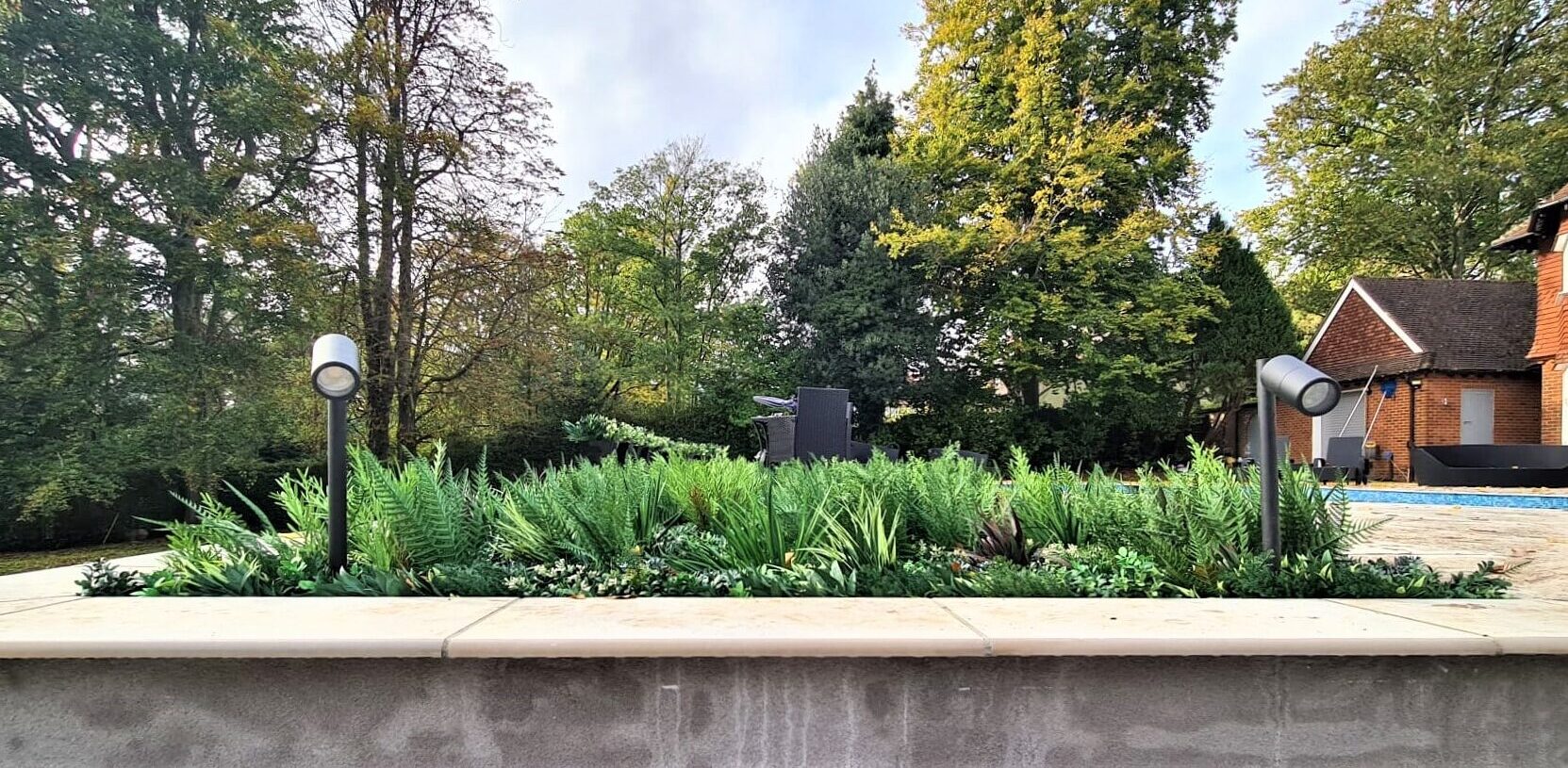
Fake Plants for Outside: Your Complete Guide
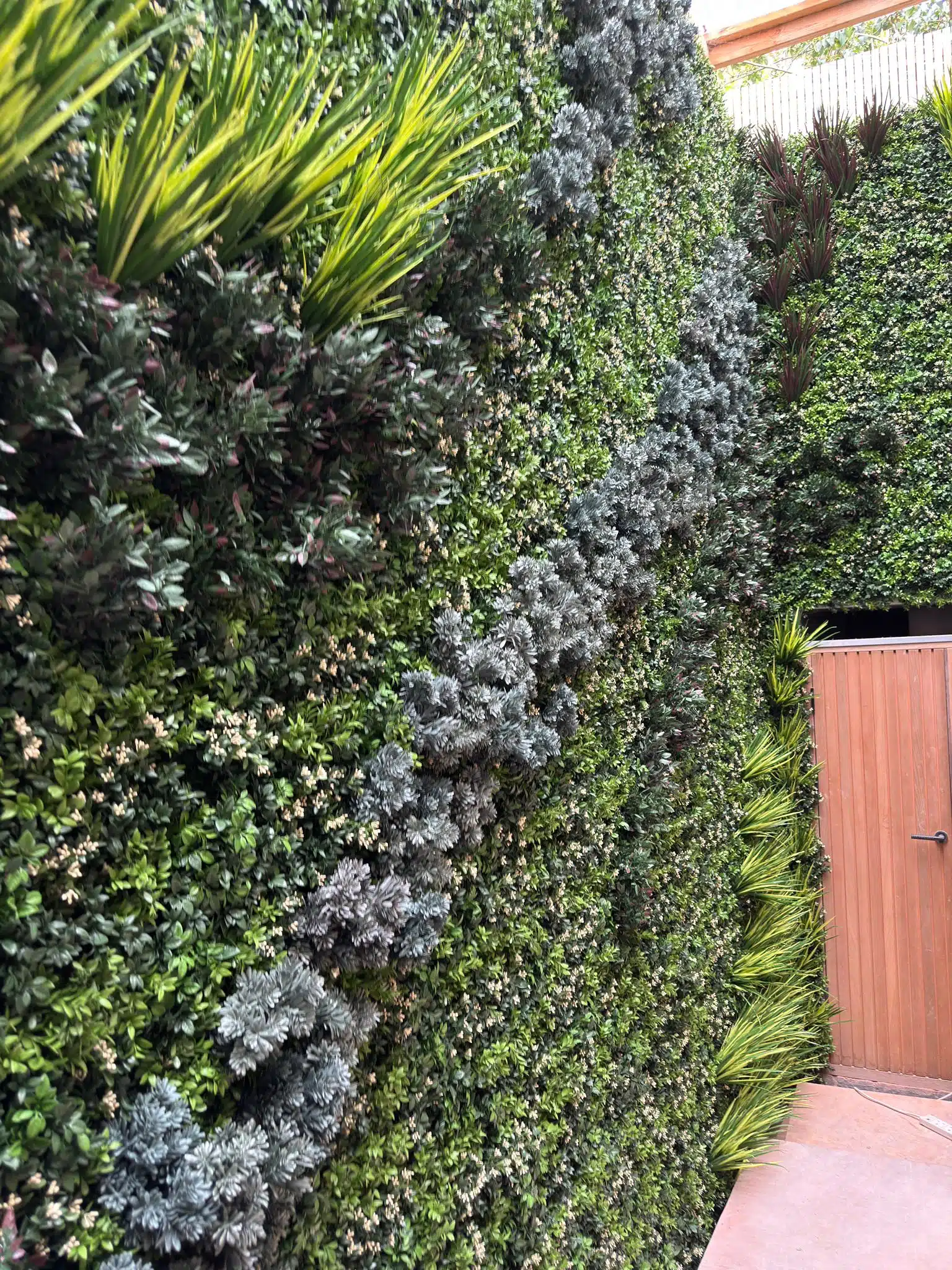
Artificial Moss Walls: Are They the Right Choice for You?
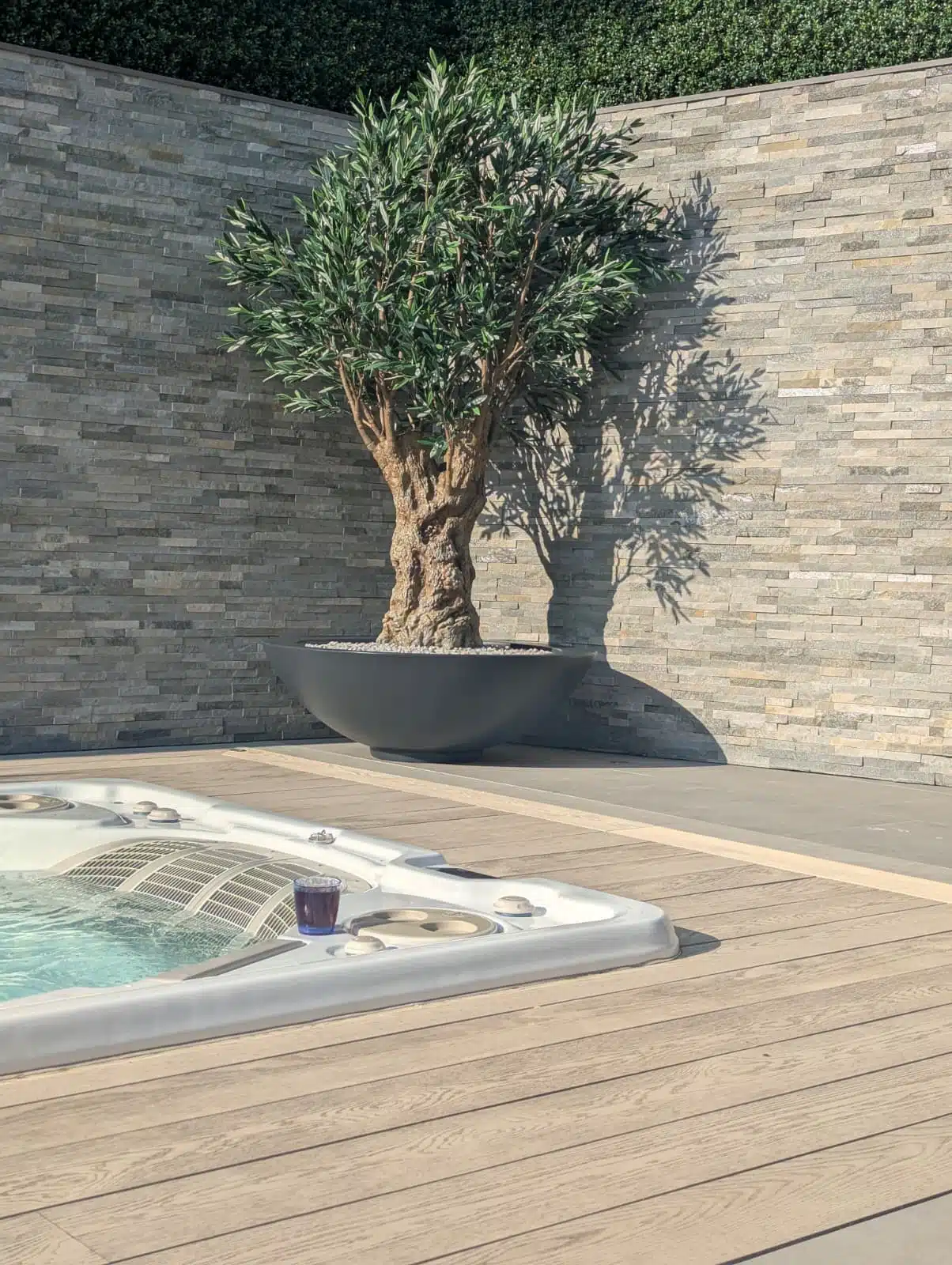
The Ultimate Artificial Olive Tree Indoors and Outdoors Buyer’s Guide
